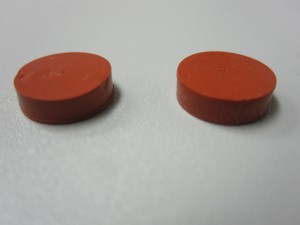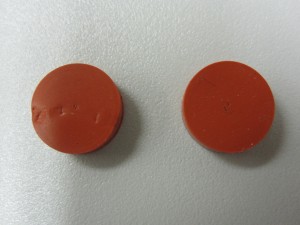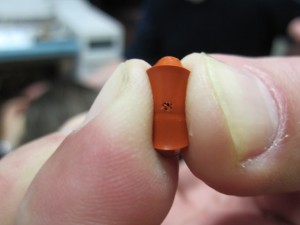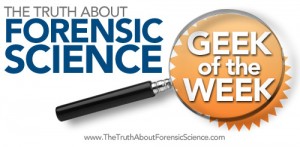The Forensic Science Geek of the Week
The week 39 “www.TheTruthAboutForensicScience.com Forensic Science Geek of the Week” honors goes to: JOSH LEE, ESQUIRE
Josh Lee, Esquire
Attorney Josh D. Lee is a criminal defense attorney and specializes in DUI Defense in Oklahoma.
* Josh is a Member of the National College for DUI Defense. Members of this non-profit organization represent the most experienced DUI defense attorneys in the nation.
* Josh is a Certified Instructor of the Standardized Field Sobriety Tests (SFSTs) by the National Highway Traffic Safety Administration (N.H.T.S.A.).
* Josh is certified to conduct the Standardized Field Sobriety Tests (SFSTs) by the National Highway Traffic Safety Administration (N.H.T.S.A.).
* Josh assembled and taught at the first N.H.T.S.A. SFST student certification course held in the state of Oklahoma taught to Attorneys, Judges, Doctors, and Private Investigators from all across the United States.
* Josh has taught to the Oklahoma Criminal Defense Lawyers Association.
* Josh has been invited to teach at the Oklahoma Bar Association 2010 Annual Meeting.
* Josh is certified by the State of Oklahoma Board of Tests for Alcohol and Drug Influence as an Independent Operator of the Intoxilyzer 5000.
* Josh is certified by the State of Oklahoma Board of Tests for Alcohol and Drug Influence as an Independent Operator of the Intoxilyzer 8000.
* Josh was one of the first attorneys nation wide that was trained by the American Chemical Society to operate, develop methods, and perform maintenance on a Gas Chromatograph. The Gas Chromatograph is the device used by the State of Oklahoma to test blood for alcohol and drugs for a DUI charge.
* Josh was the first attorney in Oklahoma to attend the American Chemical Society training on Gas Chromatography.
* Josh is the only Oklahoma attorney and one of ONLY 2 attorneys nation wide that has attend both of the American Chemical Society courses on Gas Chromatography. One course is for the scientists and the other is designed for attorneys.
* Josh is one of very few Oklahoma attorneys to receive formal training as a Drug Recognition Expert (DRE).
* Josh received Salutatorian honors at the 2009 Forensic Blood & Urine Seminar held in San Diego, California.
* Josh attended the 2010 Forensic Breath Testing Seminar held in Atlanta, Georgia.
* Josh has attended the National College for DUI Defense’s Summer Session held at Harvard Law School in Cambridge, Massachusetts.
* Josh attended the National College for DUI Defense’s 16th Annual Mastering Scientific Evidence Course held in New Orleans.
* Josh attended the National College for DUI Defense’s 17th Annual Mastering Scientific Evidence Course held in New Orleans.
* Josh has attended the Western Trial Advocacy Institute in Laramie, Wyoming.
* Josh is a former 911 Dispatcher & Police Officer and he also worked in the Tulsa County District Attorney’s office. He has experience on literally all sides of the criminal justice system.
* Josh is a former member of the Association of Oklahoma Narcotic Enforcers (A-One). While he was an active member he attended A-One’s Specialized Narcotic & Dangerous Drug Training Course.
All hail the www.TheTruthAboutForensicScience.com Forensic Science Geek of the Week!!!
See the challenge question that our winner correctly answered.
OFFICIAL QUESTION:

- Forensic Science Geek of the Week Challenge

- Forensic Science Geek of the Week Challenge

- Forensic Science Geek of the Week Challenge
1. What are these?
2. What are they used for?
3. What can go wrong with them? Why?
Please visit the www.TheTruthAboutForensicScience.com FaceBook fan page.
Our Geek of the Week answered:
Septa.
Used in a Gas Chromatograph machine. They are installed on the top side of the liner as part of the injector port. The needle goes through the septum and makes the injection into the GC
They must be airtight to prevent contamination and leakage of pressure. Either calls into doubt the accuracy of any results obtained of that machine.
Typing on the iPhone on an airplane on my way to the American Chemical Society national meeting, so forgive my brevity.
[BLOGGER’S NOTE: Lots of answers. Thank you all for contributing. Here are the Honorable Mentions (Remember it is the most complete correct answer first that wins):
1. Brian Manchester, Esquire wrote “The items depicted are rubber septa. They are used to cover the injection port of a gas chromatograph. Their purpose is to seal the top of ths injection port so as to maintain equilibrium in the system. [We think he meant to maintain the principles of Henry’s Law conditions (pressure, flow and temperature) and not “equilibrium” as that would be the more complete answer.] How they work is they are put over the injection port and then screwed down into place. [Actually pushed down into place but then the injector port top housing is screwed on tightly.] Then the injection needle is inserted into the septa [s]o that maintains an air tight seal around the needle as it enters and exits the injection port. With multiple punctures of the septa the septa becomes weakened (as shown in the third picture) and it will lose its seal and carrier gas and possibly portions of the sample will leak out. As gas chromotography is based on Henry’s law which relies on a constant temperature, pressure, and flow[,] [w]hen the seal on the injection port leaks, the variables are changed and thus the final results are in doubt.”
2. C. Jeff Sifers, Esquire wrote “These are Gas Chromatograph injection port [] septums. In GC/FID testing the flow of carrier gas passes across the face of the septum and then carries the sample into the column. The septums are used to seal injection ports on the GC preventing loss of carrier gas flow and any sample injection. Because of the constant perforation by syringes introducing sample in to the GC, the septums can leak thereby causing dramatic effects in the flow rate of the carrier gas and the end chromatographic sample result.”
3. Robert Lantz, PhD wrote “These are silicone septa, generally used in the injection port of a GC. The bottom photo is an excellent reminder that a prime failure mode for the septum is multiple injections, which may produce a ragged hole in said septum. This can easily cause a change in the column head pressure. This can lead to spikes in the baseline. In extreme cases, it can cause a loss in signal as the sample is expelled from the injection port, rather than into the column. Note, too, that the GC on which this was used seems not to have a good sealing device (knife edge) in the injection port. One surface of the septum also seems to have had a chunk taken out of it. This, too, will cause poor sealing.]
The Hall of Fame for the www.TheTruthAboutForensicScience.com Forensic Science Geek of the Week:
Week 1: Chuck Ramsay, Esquire
Week 2: Rick McIndoe, PhD
Week 3: Christine Funk, Esquire
Week 4: Stephen Daniels
Week 5: Stephen Daniels
Week 6: Richard Middlebrook, Esquire
Week 7: Christine Funk, Esquire
Week 8: Ron Moore, B.S., J.D.
Week 9: Ron Moore, B.S., J.D.
Week 10: Kelly Case, Esquire and Michael Dye, Esquire
Week 11: Brian Manchester, Esquire
Week 12: Ron Moore, B.S., J.D.
Week 13: Ron Moore, B.S., J.D.
Week 14: Josh Lee, Esquire
Week 15: Joshua Dale, Esquire and Steven W. Hernandez, Esquire
Week 16: Christine Funk, Esquire
Week 17: Joshua Dale, Esquire
Week 18: Glen Neeley, Esquire
Week 19: Amanda Bynum, Esquire
Week 20: Josh Lee, Esquire
Week 21: Glen Neeley, Esquire
Week 22: Stephen Daniels
Week 23: Ron Moore, B.S., J.D.
Week 24: Bobby Spinks
Week 25: Jon Woolsey, Esquire
Week 26: Mehul B. Anjaria
Week 27: Richard Middlebrook, Esquire
WEEK 28: Ron Moore, Esquire
Week 29: Ron Moore, Esquire
Week 30: C. Jeffrey Sifers, Esquire
Week 31: Ron Moore, Esquire
Week 32: Mehul B. Anjaria
Week 33: Andy Johnston
Week 34: Ralph R. Ristenbatt, III
Week 35: Brian Manchester, Esquire
Week 36: Ron Moore, Esquire
WEEK 37: UNCLAIMED, IT COULD BE YOU!
Week 38: Pam King, Esquire
Week 39: Josh Lee, Esquire




